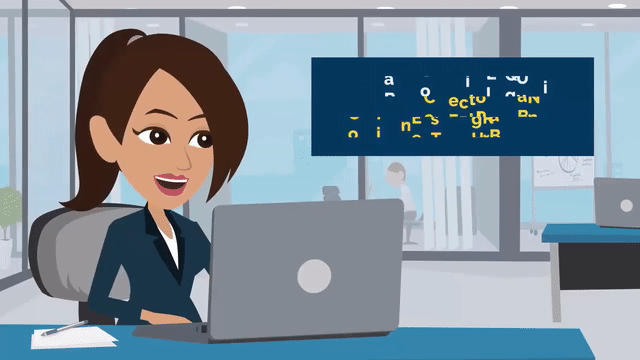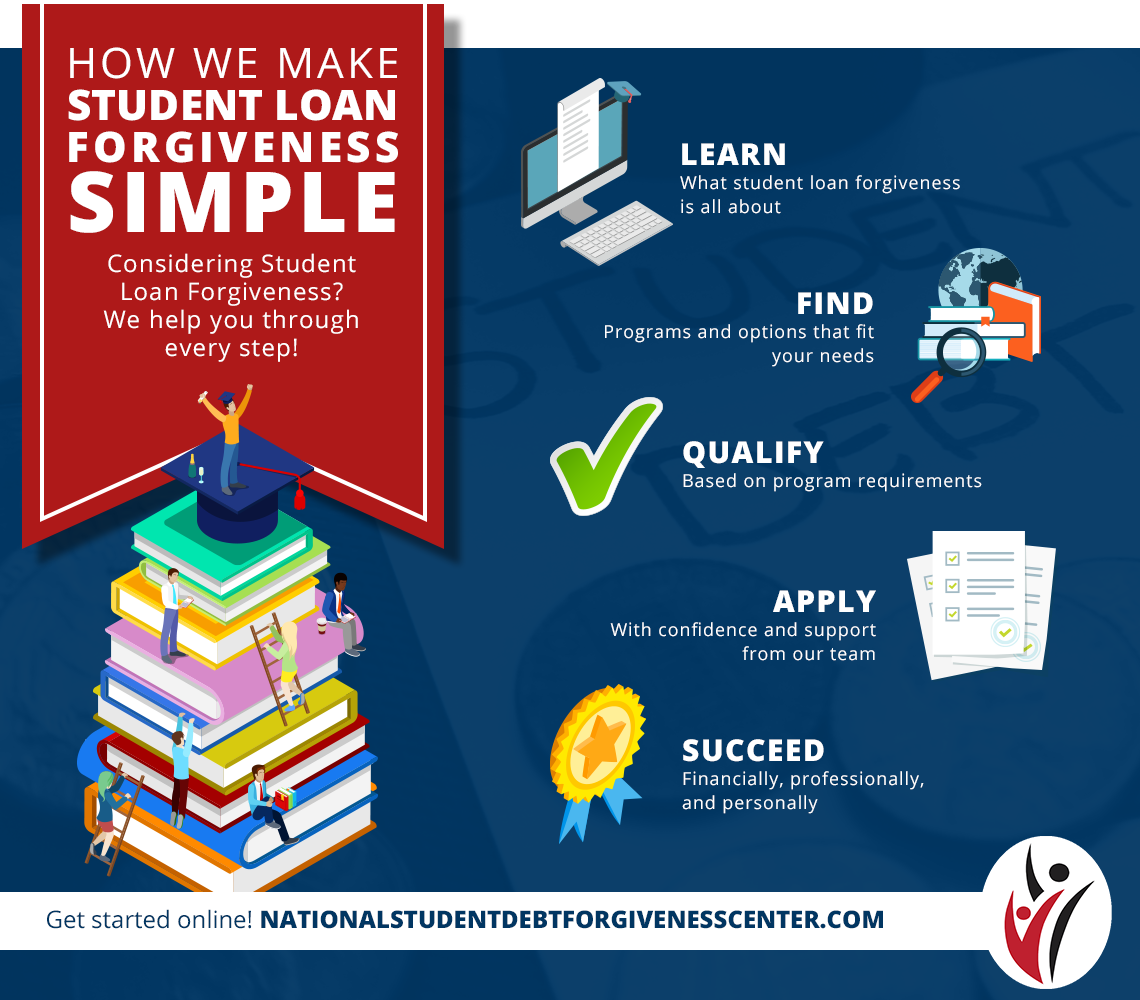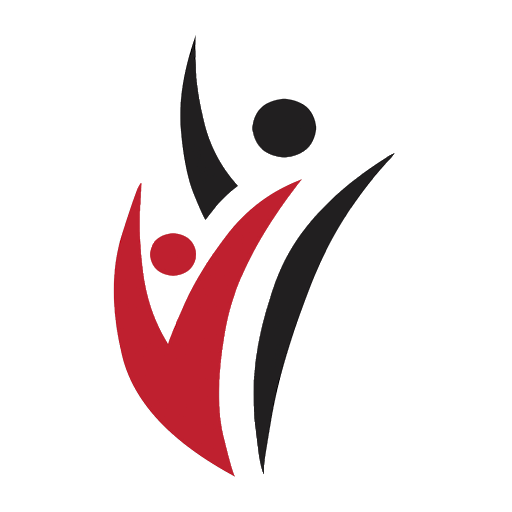Student Loan Repayment Program Consultants
At National Student Debt Forgiveness Center, our consultants understand how monotonous and confusing it can be to navigate the process of applying for student loan forgiveness. That is why we are here to help. There are several programs available to assist borrowers with the burden of federal student loan debt. Our goal is to simplify these processes in order to help maximize your forgiveness and minimize your frustration.
What is the Public Service Loan Forgiveness (PSLF) Program?
The PSLF Program was established by Congress in 2007 to encourage individuals to enter lower-paying but vitally important public-sector jobs such as military service, law enforcement, public education, and public health professions. The PSLF Program forgives the remaining balance of their Direct Loans after they have worked full-time for a qualifying employer for at least 10 years, while making 120 qualifying payments. Only payments made under certain repayment plans (primarily income-driven repayment plans) qualify for PSLF.


How to Qualify for PSLF

Have Direct Loan Program loans

Have the Right Payment Plan

Work Full-Time for a Qualifying Employer

Make 120 Qualifying Payments

Gain Credit through Annual Recertification
Direct Loans
Any loan that is part of the William D. Ford Federal Direct Loan (Direct Loan) Program qualifies for PSLF. Payments made under a Direct Consolidation Loan can also qualify. Private loans do not qualify for the program.
Qualifying Payments
Making a qualifying payment means it is a Direct loan payment, and it is an on-time, full, scheduled monthly payments. “On-time” means no later than 15 days after the due date. Full payments are in an amount that equals or exceeds the amount you are required to pay each month under your Direct Loan repayment schedule. Payments must be made after Oct. 1, 2007 to qualify, and they do not have to be consecutive (which may apply if your loans are in a grace period or have breaks for forbearance.)
Eligible Employers
Working in a position that is eligible for PSLF is not about your job title; it is about the company for which you are working. Qualifying employers include U.S.-based government organizations at any level (federal, state, local, or tribal)–including the U.S. military—501(c)3 not-for-profit organizations, and other not-for-profit organizations that devote a majority of their full-time equivalent employees to providing certain qualifying public services. Serving as a full-time AmeriCorps or Peace Corps volunteer also counts as qualifying employment for the PSLF Program. Labor unions and for-profit organizations do not qualify.
Full-Time Employment
Full-time employment is also required to qualify for PSLF. For purposes of the PSLF, full-time employment is working for a qualifying employer(s) for a weekly average, alone or when combined (if working for another qualifying employer), equal to at least 30 hours: during the period being certified; throughout a contractual or employment period of at least 8 months in a year, such as elementary and secondary school teachers, in which case the borrower is deemed to have worked full time for the entire year; or determined by multiplying each credit or contact hour taught per week by at least 3.35 in non-tenure track employment at an institution of higher education.
Annual Recertification
If you are working towards loan forgiveness through PSLF, it is important that you submit your income driver payment application and your Employment Certification Form (ECF) annually, or any time you change employers during that ten-year span. This will save you time and headaches in the long run, and ensure that you remain eligible. You will also need to submit an Income-Driven Repayment Application.
Who Is Eligible?
To be eligible, you must work for a non-profit 501(c)(3) organization or government organization.
The following are examples of careers and organizations that qualify:

Public Charities

Religious Organizations

Public Education

Healthcare

Law

Military

Law Enforcement

Public Works

Community Development
PSLF FAQs
Are loan amounts forgiven under PSLF considered taxable by the IRS?
No. According to the Internal Revenue Service (IRS), student loan amounts forgiven under PSLF are not considered income for tax purposes. For more information, check with the IRS or a tax advisor.
Does my income level determine eligibility for PSLF?
There is no income requirement to qualify for PSLF; however, since the required monthly payment amount under most qualifying PSLF repayment plans is based on your income, your income level over the course of your public service employment may be a factor in determining whether you have a remaining loan balance to be forgiven after making 120 qualifying payments.
Can I be certain that the PSLF Program will exist by the time I have made my 120 qualifying payments?
We cannot make any guarantees about the future availability of PSLF. The PSLF Program was created by Congress, and Congress could change or end the PSLF Program.
I have federal student loans from a program other than the Direct Loan Program. Can I qualify for PSLF?
PSLF is available only for Direct Loans; however, if you have loans under another federal student loan program, you may consolidate those loans into a Direct Consolidation Loan, which is eligible for PSLF.
Which repayment plans qualify?
Qualifying repayment plans include all income-driven repayment (IDR) plans and the 10-year Standard Repayment Plan:
- Saving on a Valuable Education (SAVE) Plan/REPAYE Plan
- Pay As You Earn (PAYE) Repayment Plan
- Income-Based Repayment (IBR) Plan
- Income-Contingent Repayment (ICR) Plan
While payments made under the 10-year Standard Repayment Plan are qualifying payments, you might have to change to an IDR plan to benefit from PSLF. Under the 10-year Standard Repayment Plan, generally your loans will be paid in full once you have made 120 qualifying PSLF payments, so there would be no balance left to forgive unless periods of qualifying deferments or forbearances are included in your 120 qualifying payments.
Temporary Expanded Public Service Loan Forgiveness (TEPSLF)
If some or all of your payments weren’t made on a qualifying repayment plan for PSLF, you may be able to receive loan forgiveness under a temporary opportunity the ED refers to this opportunity as Temporary Expanded Public Service Loan Forgiveness (TEPSLF).
The Consolidated Appropriations Act, 2018, provided limited, additional conditions under which you may become eligible for loan forgiveness if some or all of the payments you made on your Direct Loans were under a nonqualifying repayment plan for PSLF. This opportunity is temporary, has limited funding, and must be provided on a first come, first served basis. Once all of the funds are used, the TEPSLF opportunity will end.
How to qualify for TEPSLF
To qualify for loan forgiveness under the TEPSLF opportunity, you must have:
- made all of your payments under a qualifying repayment plan for TEPSLF;
- had at least 10 years of full-time employment certified by a qualifying employer;
- met the TEPSLF requirement for the amount you paid 12 months prior to applying for TEPSLF and the last payment you made before applying for TEPSLF to be at least as much as you would have paid under an income-driven repayment plan; and
- made 120 qualifying payments* under the new requirements for TEPSLF while working full-time for your qualifying employer or employers
Only Direct Loans—one type of federal student loan—are eligible for the TEPSLF opportunity; however, neither defaulted Direct Loans nor Direct PLUS Loans made to you as a parent borrower are eligible for forgiveness under TEPSLF.
*A qualifying monthly payment is one that is made after Oct. 1, 2007; for the full amount due on the bill; while employed full-time by a qualifying employer.
Why you may be eligible for TEPSLF even if previously denied for PSLF
Upon submission of the PSLF form, your payments will be considered for both PSLF and TEPSLF using an expanded list of qualifying repayment plans. Some payments that don’t count toward loan forgiveness under PSLF may count toward forgiveness under TEPSLF.
The additional qualifying repayment plans include the Graduated Repayment Plan, Extended Repayment Plan, Consolidation Standard Repayment Plan, and Consolidation Graduated Repayment Plan. These plans don’t usually qualify for PSLF.
You will be eligible for the TEPSLF opportunity only if, among other requirements, the amount you paid 12 months prior to applying for TEPSLF and the last payment you made before applying for TEPSLF are at least as much as you would have paid under an income-driven repayment plan. ED will assess this and contact you if they need documentation of your income to determine whether you are eligible.
Wondering if you're eligible?
Send us a message, set up an appointment, and more. Click the link below!

Select Page